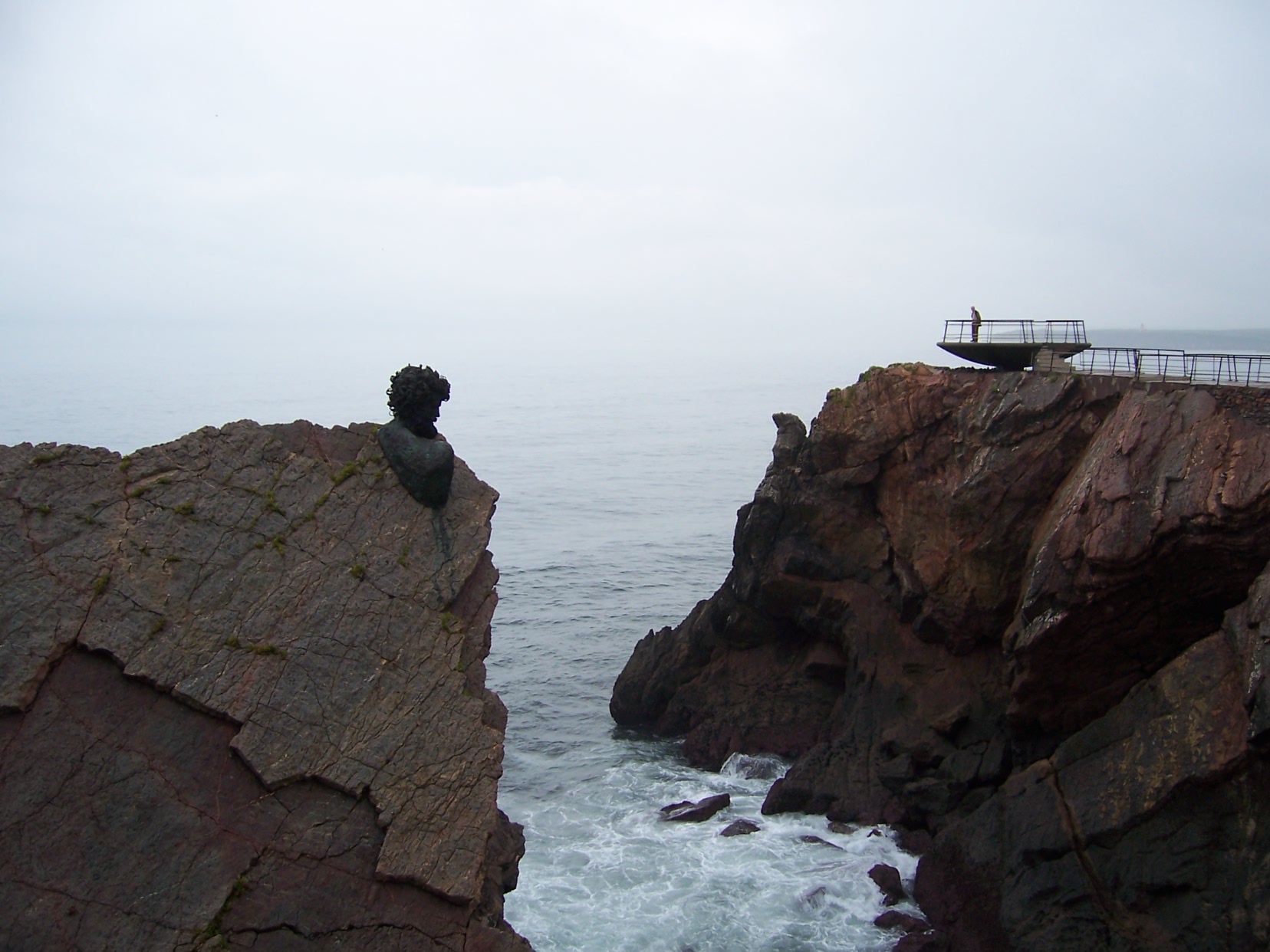|
Salinas (Castrillón)
Salinas is one of eight Parish (administrative division), parishes (administrative divisions) in Castrillón, a Municipalities of Spain, municipality within the province and autonomous communities of Spain, autonomous community of Asturias, in northern Spain. The population is 4,635 (Instituto Nacional de Estadística (Spain), INE 2006). Salinas is a seaside resort and is the second most populated municipality behind Piedrasblancas, which is located just 2 km away. It has one of the longest beaches in Asturias, which is divided into 3 parts: Salinas, L'Espartal and San Xuan. Salinas is visited by hundreds of tourists every year. Most of them come from Madrid, seeking a cooler summer. Culture The Philippe Cousteau Anchor Museum is located in Salinas on La Peñon peninsula near the Arnao tunnel. Villages * Raíces Nuevo / La Fundición * Salinas References Parishes in Castrillón {{asturias-geo-stub ... [...More Info...] [...Related Items...] OR: [Wikipedia] [Google] [Baidu] |
Parish (administrative Division)
A parish is an administrative division used by several country, countries. To distinguish it from an ''ecclesiastical parish'', the term ''civil parish'' is used in some jurisdictions, as noted below. The table below lists countries which use this administrative division: See also * Muban References {{Terms for types of country subdivisions Civil parishes, Types of administrative division ... [...More Info...] [...Related Items...] OR: [Wikipedia] [Google] [Baidu] |
Spain
Spain, or the Kingdom of Spain, is a country in Southern Europe, Southern and Western Europe with territories in North Africa. Featuring the Punta de Tarifa, southernmost point of continental Europe, it is the largest country in Southern Europe and the fourth-most populous European Union member state. Spanning across the majority of the Iberian Peninsula, its territory also includes the Canary Islands, in the Eastern Atlantic Ocean, the Balearic Islands, in the Western Mediterranean Sea, and the Autonomous communities of Spain#Autonomous cities, autonomous cities of Ceuta and Melilla, in mainland Africa. Peninsular Spain is bordered to the north by France, Andorra, and the Bay of Biscay; to the east and south by the Mediterranean Sea and Gibraltar; and to the west by Portugal and the Atlantic Ocean. Spain's capital and List of largest cities in Spain, largest city is Madrid, and other major List of metropolitan areas in Spain, urban areas include Barcelona, Valencia, Seville, ... [...More Info...] [...Related Items...] OR: [Wikipedia] [Google] [Baidu] |
Autonomous Communities Of Spain
The autonomous communities () are the first-level political divisions of Spain, administrative divisions of Spain, created in accordance with the Constitution of Spain, Spanish Constitution of 1978, with the aim of guaranteeing limited autonomy to the nationalities and regions of Spain, nationalities and regions that make up Spain. There are 17 autonomous communities and two autonomous cities (Ceuta and Melilla) that are collectively known as "autonomies". The two autonomous cities have the right to become autonomous communities. The autonomous communities exercise their right to self-government within the limits set forth in the constitution and Organic Law (Spain), organic laws known as Statute of Autonomy, Statutes of Autonomy, which broadly define the powers that they assume. Each statute sets out the devolved powers () for each community; typically those communities with stronger local nationalism have more powers, and this type of devolution has been called ''asymmetric ... [...More Info...] [...Related Items...] OR: [Wikipedia] [Google] [Baidu] |
Asturias
Asturias (; ; ) officially the Principality of Asturias, is an autonomous communities of Spain, autonomous community in northwest Spain. It is coextensive with the provinces of Spain, province of Asturias and contains some of the territory that was part of the larger Kingdom of Asturias in the Middle Ages. Divided into eight Comarcas of Asturias, ''comarcas'' (counties), the autonomous community of Asturias is bordered by Cantabria to the east, by Province of León, León (Castile and León) to the south, by Province of Lugo, Lugo (Galicia (Spain), Galicia) to the west, and by the Cantabrian Sea to the north. Asturias is situated in a mountainous setting with vast greenery and lush vegetation, making it part of Green Spain. The region has a oceanic climate, maritime climate. It receives plenty of annual rainfall and little sunshine by Spanish standards and has very moderate seasons, most often averaging in the lower 20s Celsius. Heat waves are rare due to mountains blocking s ... [...More Info...] [...Related Items...] OR: [Wikipedia] [Google] [Baidu] |
Provinces Of Spain
A province in Spain * , ; grammatical number, sing. ''provincia'') * Basque language, Basque (, grammatical number, sing. ''probintzia''. * Catalan language, Catalan (), grammatical number, sing. ''província''. * Galician language, Galician (), grammatical number, sing. ''provincia''. is a political divisions of Spain, territorial division defined as a collection of municipalities of Spain, municipalities. The current provinces of Spain correspond by and large to the provinces created under the purview of the 1833 territorial division of Spain, 1833 territorial re-organization of Spain, with a similar predecessor from 1822 territorial division of Spain, 1822 (during the Trienio Liberal) and an earlier precedent in the 1810 Napoleonic division of Spain into 84 prefectures. There are many other groupings of municipalities that comprise the local government in Spain, local government of Spain. The boundaries of provinces can only be altered by the Spanish Parliament, giving ri ... [...More Info...] [...Related Items...] OR: [Wikipedia] [Google] [Baidu] |
Municipalities Of Spain
The municipality (, , , , , )In other languages of Spain: *Catalan language, Catalan/Valencian (), grammatical number, sing. . *Galician language, Galician () or (), grammatical number, sing. /. *Basque language, Basque (), grammatical number, sing. . *Asturian language, Asturian (), grammatical number, sing. . is one of the two fundamental territorial divisions in Spain, the other being the Provinces of Spain, provinces. Organisation Although provinces of Spain, provinces are groupings of municipality, municipalities, there is no implied hierarchy or primacy of one over the other. Instead the two entities are defined according to the authority or jurisdiction of each (). Some autonomous communities also group municipalities into entities known as ''comarcas of Spain, comarcas'' (districts) or ''mancomunidades'' (commonwealths). The governing body in most municipalities is called ''Ayuntamiento (Spain), ayuntamiento'' (municipal council or municipal corporation, corpora ... [...More Info...] [...Related Items...] OR: [Wikipedia] [Google] [Baidu] |
Castrillón
Castrillón is a municipality in Asturias, located on the central coast of Spain. It has an area of 56.70 km2 and had a population of 22,361 inhabitants (in 2005). The most important population centres are the capital Piedrasblancas, Salinas, and Raíces. Asturias Airport is located in Castrillón. The airport is located in Anzu, parish of Santiagu'l Monte, municipality of Castrillón, 15 km from Avilés, 40 km from Gijón and 47 km from the regional capital, Oviedo. Geography Situated on the littoral plain, the county is one of the flattest areas in Asturias. Its coast is formed by a series of beaches and cliffs. For this reason, the county is known as "the county of the 7 beaches", even though there are more than seven beaches along its long coastline. Inland, the area is characterized by the smoothness of the landscape, mainly formed by fertile valleys with a small river network that crosses the county. The altitude increases steadily towards the Sout ... [...More Info...] [...Related Items...] OR: [Wikipedia] [Google] [Baidu] |
Museo De Anclas Cousteau , station on line 1 of the Naples Metro
{{disambiguation ...
Museo may refer to: * ''Museum'' (2018 film), Mexican drama heist film *Museo station Museo is a Naples Metro station on Line 1. It opened on 5 April 2001 as the eastern terminus of the section of the line between Vanvitelli and Museo. On 27 March 2002 the line was extended to Dante. The station is located between Materdei and D ... [...More Info...] [...Related Items...] OR: [Wikipedia] [Google] [Baidu] |
Autonomous Communities Of Spain
The autonomous communities () are the first-level political divisions of Spain, administrative divisions of Spain, created in accordance with the Constitution of Spain, Spanish Constitution of 1978, with the aim of guaranteeing limited autonomy to the nationalities and regions of Spain, nationalities and regions that make up Spain. There are 17 autonomous communities and two autonomous cities (Ceuta and Melilla) that are collectively known as "autonomies". The two autonomous cities have the right to become autonomous communities. The autonomous communities exercise their right to self-government within the limits set forth in the constitution and Organic Law (Spain), organic laws known as Statute of Autonomy, Statutes of Autonomy, which broadly define the powers that they assume. Each statute sets out the devolved powers () for each community; typically those communities with stronger local nationalism have more powers, and this type of devolution has been called ''asymmetric ... [...More Info...] [...Related Items...] OR: [Wikipedia] [Google] [Baidu] |
Instituto Nacional De Estadística (Spain)
The (INE; ) is the official government agency in Spain that collects statistics about demography, the economy, and Spanish society. It is an autonomous organization responsible for overall coordination of statistical services of the General State Administration in monitoring, control and supervision of technical procedures. Every 10 years, the institute conducts a national census. History First agency and evolution The oldest statistics agency of Spain and the predecessor of the current agency was the General Statistics Commission of the Kingdom, created on 3 November 1856 during the reign of Isabella II. The so-then Prime Minister Narváez approved a decree creating this body and ordering that people with recognized ability in this matter were part of it. On 1 May 1861 the Commission changed its name to General Statistics Board and their first work was to do a population census. By a decree of 12 September 1870 Prime Minister Serrano created the Geographic Institute a ... [...More Info...] [...Related Items...] OR: [Wikipedia] [Google] [Baidu] |
Piedrasblancas
Piedrasblancas is the capital town of the municipality of Castrillón, in the province of Asturias, Spain. It is west of Avilés, west of Gijón, northwest of Oviedo and east of Asturias Airport. Piedrasblancas is a singular entity of population and has the title of ''Villa''. Geography Piedrasblancas, located in the parish of Laspra, is within easy access by motorway to the main urban areas of Asturias (i.e. Oviedo, Gijón, Avilés), and many of its residents commute daily to those areas. Although not properly on the coastline, it is within walking distance from the beaches of Salinas, Arnao and Santa Maria del Mar. The climate is oceanic Oceanic may refer to: *Of or relating to the ocean *Of or relating to Oceania **Oceanic climate **Oceanic languages **Oceanic person or people, also called "Pacific Islander(s)" Places * Oceanic, British Columbia, a settlement on Smith Island, ..., characterized by mild winters and summers, with temperatures rarely exceeding o ... [...More Info...] [...Related Items...] OR: [Wikipedia] [Google] [Baidu] |




